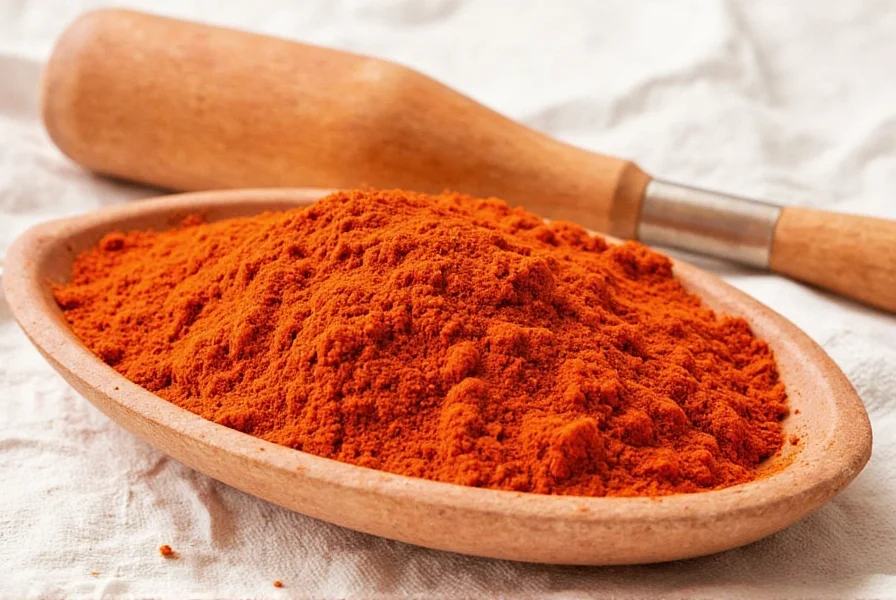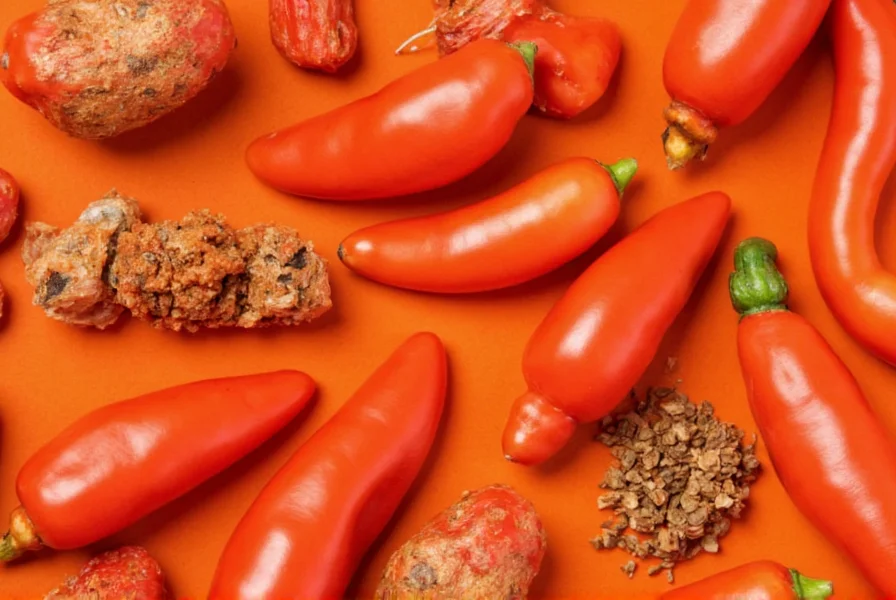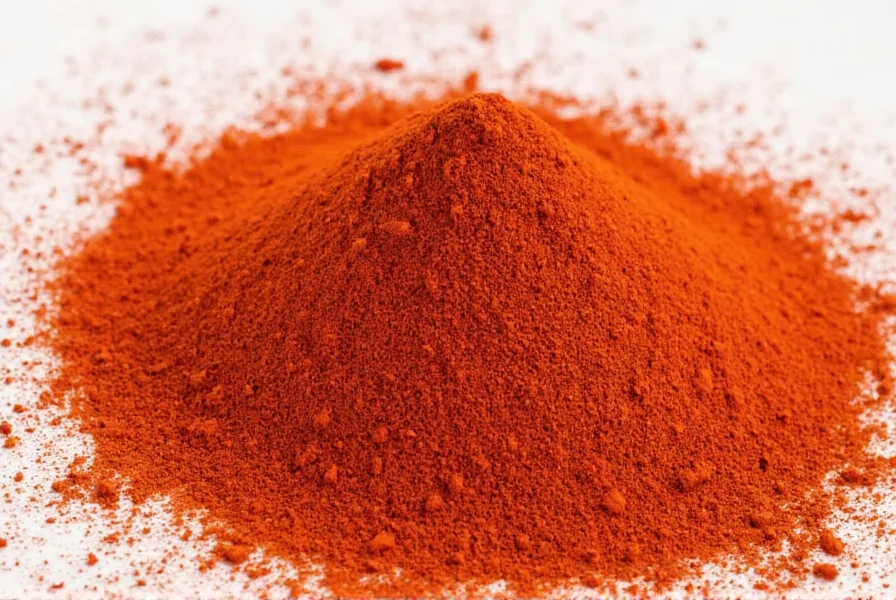Understanding Paprika and Its Varieties
Before exploring substitutes for paprika, it's essential to understand what makes this spice unique. Paprika is made from ground peppers, primarily bell peppers and chili peppers, and comes in three main varieties: sweet, smoked, and hot. Each type serves different culinary purposes, which determines the most appropriate replacement.
Sweet paprika provides vibrant red color and mild pepper flavor without heat. Smoked paprika (pimentón) offers that distinctive campfire-like smokiness essential in Spanish and Hungarian dishes. Hot paprika brings both color and noticeable heat. When seeking a substitute for paprika, identifying which characteristic matters most for your recipe is crucial.
Best Substitutes by Paprika Type
Not all paprika alternatives work equally well across all recipes. The ideal paprika replacement depends on whether your recipe requires color, smokiness, or heat. Below is a comprehensive guide to help you choose the right substitute for paprika based on your specific cooking needs.
| Paprika Type | Best Substitutes | Substitution Ratio | Best For |
|---|---|---|---|
| Sweet Paprika | Tomato paste + pinch of cayenne | 1 tsp tomato paste + 1/8 tsp cayenne per 1 tsp paprika | Color in deviled eggs, potato salad |
| Smoked Paprika | Chipotle powder + sweet paprika | 1/2 tsp chipotle + 1/2 tsp sweet paprika per 1 tsp smoked | Chili, barbecue rubs, stews |
| Hot Paprika | Sweet paprika + cayenne pepper | 3/4 tsp sweet paprika + 1/4 tsp cayenne per 1 tsp hot | Goulash, spicy marinades |
Detailed Paprika Alternatives for Specific Recipes
When searching for a substitute for paprika, consider your specific dish. The best replacement for paprika in chili differs from what works in deviled eggs or roasted vegetables. Here's how to choose wisely based on your recipe:
For Color Without Heat
If you need paprika's signature red hue without spiciness (like in deviled eggs or potato salad), tomato paste is your best friend. Mix 1 teaspoon of tomato paste with 1/8 teaspoon of cayenne pepper to replace 1 teaspoon of sweet paprika. For a more subtle approach, try a pinch of beet powder mixed with sweet bell pepper flakes. This paprika alternative for color works perfectly when appearance matters more than flavor complexity.

For Smoky Flavor
When you need a substitute for smoked paprika in recipes like paella or chorizo, don't reach for regular chili powder—it lacks the distinctive smokiness. Instead, combine 1/2 teaspoon of chipotle powder with 1/2 teaspoon of sweet paprika to replace 1 teaspoon of smoked paprika. No chipotle? Try 1/4 teaspoon of liquid smoke diluted in 1 teaspoon of water, added during cooking. Smoked salt (use sparingly) also works as a paprika replacement when you need that campfire essence.
For Heat and Flavor
For recipes requiring hot paprika's kick, such as Hungarian goulash, blend sweet paprika with cayenne. Use three parts sweet paprika to one part cayenne to replace hot paprika. If you don't have either, crushed red pepper flakes work in a pinch, but use half the amount since they're more potent. This substitute for paprika maintains both color and heat without overwhelming your dish.
What NOT to Use as Paprika Substitutes
Some common suggestions for paprika alternatives simply don't work well. Avoid these ineffective substitutes for paprika:
- Plain chili powder - Contains additional spices like cumin and oregano that alter flavor profiles
- Paprika extract - Not a practical kitchen solution and often too concentrated
- Cayenne alone - Provides heat but lacks color and sweet pepper notes
- Red food coloring - Adds color but zero flavor dimension
Recipe-Specific Paprika Replacement Guide
The ideal substitute for paprika varies by dish. Here's how to choose the right alternative based on your specific recipe:
| Recipe Type | Best Paprika Substitute | Why It Works |
|---|---|---|
| Deviled Eggs | Tomato paste + pinch of cayenne | Mimics color without overpowering delicate flavor |
| Chili | Chipotle powder + sweet paprika | Provides both smokiness and depth needed in chili |
| Goulash | Sweet paprika + cayenne | Recreates traditional Hungarian flavor profile |
| Roasted Vegetables | Smoked salt + sweet paprika | Adds subtle smokiness without bitterness |
Creating Your Own Paprika Blend
If you frequently need a substitute for paprika, consider making your own custom blend. Roast bell peppers and mild chilies until charred, then dry them thoroughly before grinding. For smoked paprika substitute, add a chipotle pepper to the mix. Store your homemade alternative in an airtight container away from light. This approach gives you control over the heat level and smokiness, creating the perfect paprika replacement for your taste preferences.

Storage Tips for Paprika Alternatives
Most paprika substitutes have shorter shelf lives than commercial paprika. Tomato paste mixtures should be used immediately. Ground alternatives like chipotle-sweet paprika blends keep for 2-3 months in airtight containers. For longer storage, freeze chipotle powder in ice cube trays with a bit of oil, then transfer to freezer bags. Properly stored substitutes maintain their flavor profile, ensuring your paprika replacement works effectively when you need it.
Final Considerations When Choosing Paprika Substitutes
The perfect substitute for paprika depends on your specific culinary needs. Always consider whether color, smokiness, or heat matters most for your dish. When in doubt, start with a smaller amount of your chosen alternative—you can always add more but can't remove excess. Remember that the best paprika replacement enhances your dish rather than overpowering it. With these guidelines, you'll never have to abandon a recipe when you're out of paprika.
Frequently Asked Questions
Can I use chili powder instead of paprika?
Chili powder makes a poor direct substitute for paprika because it contains additional spices like cumin, oregano, and garlic powder that alter your dish's flavor profile. If you must use chili powder as a paprika replacement, use half the amount and expect a different taste. For better results, create a custom blend using sweet paprika and a touch of cayenne.
What's the best substitute for smoked paprika in paella?
For paella, the best substitute for smoked paprika is a combination of sweet paprika and a tiny amount of liquid smoke (1-2 drops per teaspoon of paprika). Alternatively, use chipotle powder diluted with sweet paprika at a 1:3 ratio. Smoked salt also works well when used sparingly (1/4 teaspoon per recipe) as it provides the essential smoky element without overwhelming the delicate rice dish.
How do I replace paprika in deviled eggs?
For deviled eggs, the ideal paprika substitute focuses on color rather than heat. Mix 1 teaspoon of tomato paste with 1/8 teaspoon of cayenne pepper to replace 1 teaspoon of sweet paprika. If you prefer no heat at all, use a pinch of beet powder mixed with sweet bell pepper flakes. This paprika alternative provides the traditional red hue without altering the delicate flavor of the egg filling.
Can I make my own paprika substitute from fresh peppers?
Yes, you can create a homemade paprika substitute by roasting bell peppers and mild chilies until charred, then drying them thoroughly before grinding. For smoked paprika substitute, include a chipotle pepper in the mix. The key is complete dehydration—any moisture will cause mold. This DIY approach works well as a paprika replacement when you have time to prepare it properly, yielding a fresher, more vibrant alternative than store-bought options.
What's the difference between using cayenne versus chipotle as paprika substitutes?
Cayenne provides pure heat without smokiness, making it suitable only as part of a hot paprika substitute when combined with sweet paprika. Chipotle powder offers both heat and smokiness, making it ideal for replacing smoked paprika when diluted with sweet paprika. Understanding this distinction helps you choose the right paprika replacement based on whether your recipe needs color, heat, or smokiness as the primary characteristic.











 浙公网安备
33010002000092号
浙公网安备
33010002000092号 浙B2-20120091-4
浙B2-20120091-4